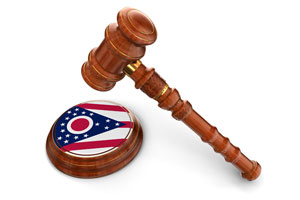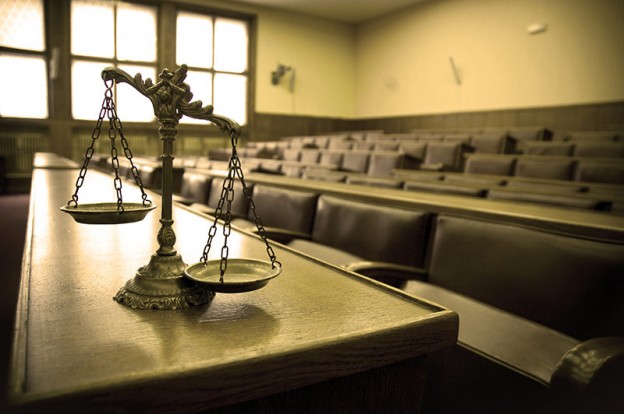A jury awarded more than $2.2 million against a negligent rehabilitation facility in Boise, Idaho. The jury found that nursing negligence resulted in the amputation of an elderly woman’s leg. A physician and a life care planner were among the expert witnesses who testified for the plaintiff. The Idaho Supreme Court rejected challenges to the admission of their expert testimony and affirmed the judgment in the plaintiff’s favor.
Facts of the Case
Leila Brauner was 76 years old when she decided to have a total knee arthroplasty. The procedure replaces damaged bone and cartilage with an artificial knee joint. Brauner hoped that the knee replacement would enable her to continue living an independent life.
The procedure was performed in Boise by Dr. Richard Moore, an orthopedic surgeon. Brauner was then transferred to Aspen Transitional Rehab.
About two weeks after the surgery, Dr. Moore noted that Brauner’s knee was swollen. Brauner complained of numbness in her foot. Dr. Moore had an x-ray taken of Brauner’s right leg. He failed to diagnose a fracture in her femur. Dr. Brauner recommended placing ice on the knee and sent her back to the rehab facility.
Blauner’s pain increased. About two weeks after the x-ray, Brauner began to experience confusion during the middle of the night. A nurse noted that her right foot had curled inward and that her pulse rate had increased significantly. Bruising was visible on her leg. Brauner complained that she was in extreme pain and asked the nurses to shoot her.
Brauner’s nursing expert testified that the nurses should have recognized that Brauner’s symptoms demanded immediate medical attention. The nurses at Aspen failed to call a doctor.
About two hours later, Brauner’s leg was cold to the touch, her skin was pale, and no pulse could be detected in her foot or ankle bone. Brauner demanded that she receive emergency care. She was transferred to a hospital, where doctors determined that her fractured femur had severed the femoral artery. A surgeon amputated the leg at the thigh.
Expert Witness Disclosure
Brauner sued Dr. Moore and Aspen for medical malpractice. The trial judge set deadlines for expert witness disclosure.
Brauner settled her claim against Dr. Moore. She disclosed Dr. Moore as one of her expert witnesses. Three days later, she amended the disclosure to specify that he would testify about the steps he would have taken if he had been informed of Brauner’s condition when nurses first noticed her inward-curling foot and other symptoms.
Brauner also disclosed her intent to call Michelle Nielson Cook to testify about future damages. Cook is a certified life care planner.
Cook prepared a life care plan detailing the future expenses that Brauner would need to incur to cope with her amputated leg. She revised that plan after reviewing it with Brauner’s treating physician. The revised version was disclosed as her expert report.
After her report was disclosed, Cook shared it with the surgeon who performed Brauner’s amputation. He confirmed Cook’s findings.
During her deposition, Cook acknowledged that she made notes on the first draft of the report when she spoke to Brauner’s treating physician and used those notes to help her prepare the revised report. Brauner refused to produce the draft report with her notes because earlier drafts of an expert report are not discoverable in Idaho. During the deposition, Cook testified extensively about the information she received from the treating physician.
Shortly before trial, Cook prepared an amended report. The primary revisions included a reduction in medical damages to conform to a court ruling, a mention of her discussion with the surgeon who performed the amputation, and an itemization of the medical information that she relied upon in preparing the report. The medical information was all contained in medical records that had previously been disclosed.
The amended report was provided to Aspen the day before trial began. Aspen moved to exclude it on the ground that it was untimely and for lack of foundation. The court admitted the report over objection.
Challenges to Life Care Planner’s Prediction of Future Medical Needs
On appeal, Aspen argued that Cook was not qualified to testify about the medical necessity for future health care expenses that resulted from the amputation. The appellate court noted that decisions in some states have required medical necessity to be proved by a medical expert, while other courts have permitted life care experts to base their testimony on their own expertise in reviewing medical records, coupled with confirmation of medical necessity by a physician.
The Idaho Supreme Court followed the latter rule. The court noted that experts can generally rely upon facts to form an opinion if facts of a similar nature are reasonably relied upon by experts in the same field. That rule suggests that life care planning experts can rely on medical records and the opinions of physicians to form an opinion, since that is information that life care planners reasonably rely upon to form opinions.
Since Cook followed a reasonable methodology and considered reliable facts in reaching her opinion, the opinion was admissible under Idaho law.
Challenge to Scheduling Order Violation
Aspen objected to Cook’s amendment of her report on the eve of trial. The trial court noted that experts have a duty under Idaho law to supplement their reports if their opinions change.
The amendment was necessary because the trial judge ruled that medical expenses should be based on the amount that would actually be paid, not on the amount that would be billed. The appellate court noted that the judge’s ruling was wrong, but given that ruling, Cook had a duty to amend her report to reflect the calculation that the court required.
While the supreme court expressed concern that Cook waited so long to amend the report, it concluded that the trial court did not abuse its discretion when it decided not to strike the amended report. Since the report revised downward the estimate of future healthcare costs, the amendment did not prejudice Aspen. In fact, the appellate court was puzzled that Aspen was challenging an amendment that worked to its benefit.
Failure to Disclose Expert’s Notes
When Cook spoke to Brauner’s physicians about the initial draft of her expert report, she made notes in the margins of that report. Brauner’s refusal to produce the notes triggered a dispute as to whether the notes were part of the draft and thus not discoverable under Idaho law, or whether they were discoverable regardless of the document on which they were written.
Brauner assured the court that Cook’s testimony about the notes during her deposition was complete, even though she did not read the notes into the record. The supreme court concluded that the trial judge should not have accepted that representation, but should have reviewed the notes to determine whether they were a discoverable compilation of information for possible use in the case, or notes which were created with the expectation that they would be used in the final report. Facts in the former category are discoverable while facts in the latter category are not.
The district court’s failure to engage in the required analysis was nevertheless harmless. The only notation that could arguably have changed Aspen’s cross-examination was an “oblique reference” to the possibility of living at home. However, uncontradicted evidence established that Brauner’s attempt to live independently after her amputation was unsuccessful. Since production of the notes would not have affected the trial, the court’s error did not require the judgment to be reversed.
Dr. Moore’s Expert Testimony
Dr. Moore was designated as an expert, but not as a retained expert. Accordingly, Idaho law did not require him to prepare an expert report. Brauner satisfied Idaho law by providing a statement about the subject matter of Dr. Moore’s anticipated testimony.
Brauner made a timely disclose of Dr. Moore on the last day permitted by the scheduling order, as modified by agreement of the parties. On the next business day, Brauner amended the disclosure to add that Dr. Moore would testify about measures he would have taken if Aspen had immediately informed him of Brauner’s symptoms.
The trial court excused the belated amendment because it did not prejudice Aspen. The Idaho Supreme Court sensibly decided that being one day late in a disclosure that comes months before trial could not have affected Aspen’s ability to defend the case. While some courts take a more rigid view of deadlines, the Idaho approach recognizes that justice is served when parties are allowed to present important evidence and that strict adherence to deadlines should not stand in the way of doing justice.













